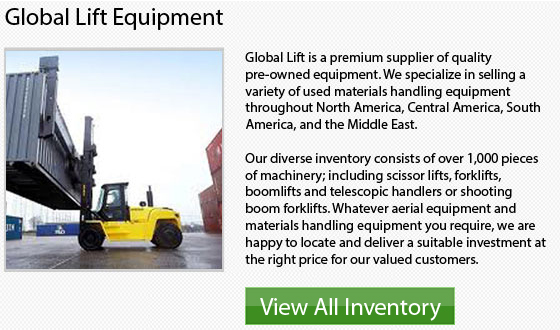
Electric forklift models make up nearly sixty percent of the entire material handling market. Powering these units are really heavy lead-acid batteries. Because of their immense weight, these batteries naturally give much of the counterweight.
Counterbalanced trucks are classified by the ITA as Class 1 forklifts. Class 1 also includes other electric trucks designed for general applications and stand-up counterbalanced trucks. Although the first expenditure of an electric lift truck is more than internal combustion lift trucks, electric models are less expensive to utilize eventually. This is due to their lower maintenance and fuel expenses.
The majority of electric lift truck units which have been manufactured and engineered in North America, are used mainly in indoor environments. Electric forklifts have traditionally been limited to indoor use with surfaces that are clean and smooth. With the introduction of some new Class 1 items, it is becoming increasingly possible to utilize electric rider models in some outdoor operations.
When compared to IC lift trucks, the electric trucks are usually chosen for indoor applications due to the fact they provide no harmful emissions, can usually complete a full 8 hour shift on one battery charge and are very quiet to run. The batteries for electric units weigh approximately 3,000 pounds. The job of recharging, reloading and removing the batteries can be burdensome and time consuming. This situation usually occurs at a battery charging station or an area that is specially designed for handling batteries. There are developing fast charging technologies becoming available on the market and these new systems are changing the battery charging process.
The Proper Fit
Utilizing the correct size of forklift to do the specific application is important to any business application. The application itself must always dictate which product is selected.
Clients are striving to find lower operating costs and more effective methods to reduce operating expenses, all the while increasing their overall productivity, particularly as the economy becomes more complex and competitive. Using the wrong size of forklift could greatly slow things down and have a huge impact on the bottom line and productivity of a business, while negatively affecting the productivity on the jobsite.
If you are uncertain about what particular type of forklift you need, a reliable dealer would be able to ask you the right questions which would allow you to make a proper choice. Numerous dealerships offer rentals of their machines as well and this is a very great way to try before you commit to such a huge purchase. It is also a good way to try various models out to see which ones you and your operators are the most comfortable with and which ones bring you the best productivity.